The short-finned pilot whale, a treasure in Canarian waters
By: Marina Tortosa (@aguitasubmarina)
The short-finned pilot whale, scientifically known as Globichepala macrorhynchus, is the most common cetacean in the Canary Islands. In the waters around the southwest of Tenerife and the west coast of La Gomera, it is easy to spot a dark silhouette resting in the sea surface near the coast. The more than 400 photo-identified individuals inhabiting the southern waters of Tenerife constitute one of the few resident pilot whale populations in the world. Today we continue to learn about them on each of our tours, and despite being such a common species on the island, they hold many secrets that we still don’t know. Want to know more about these incredible cetaceans?
Read on!
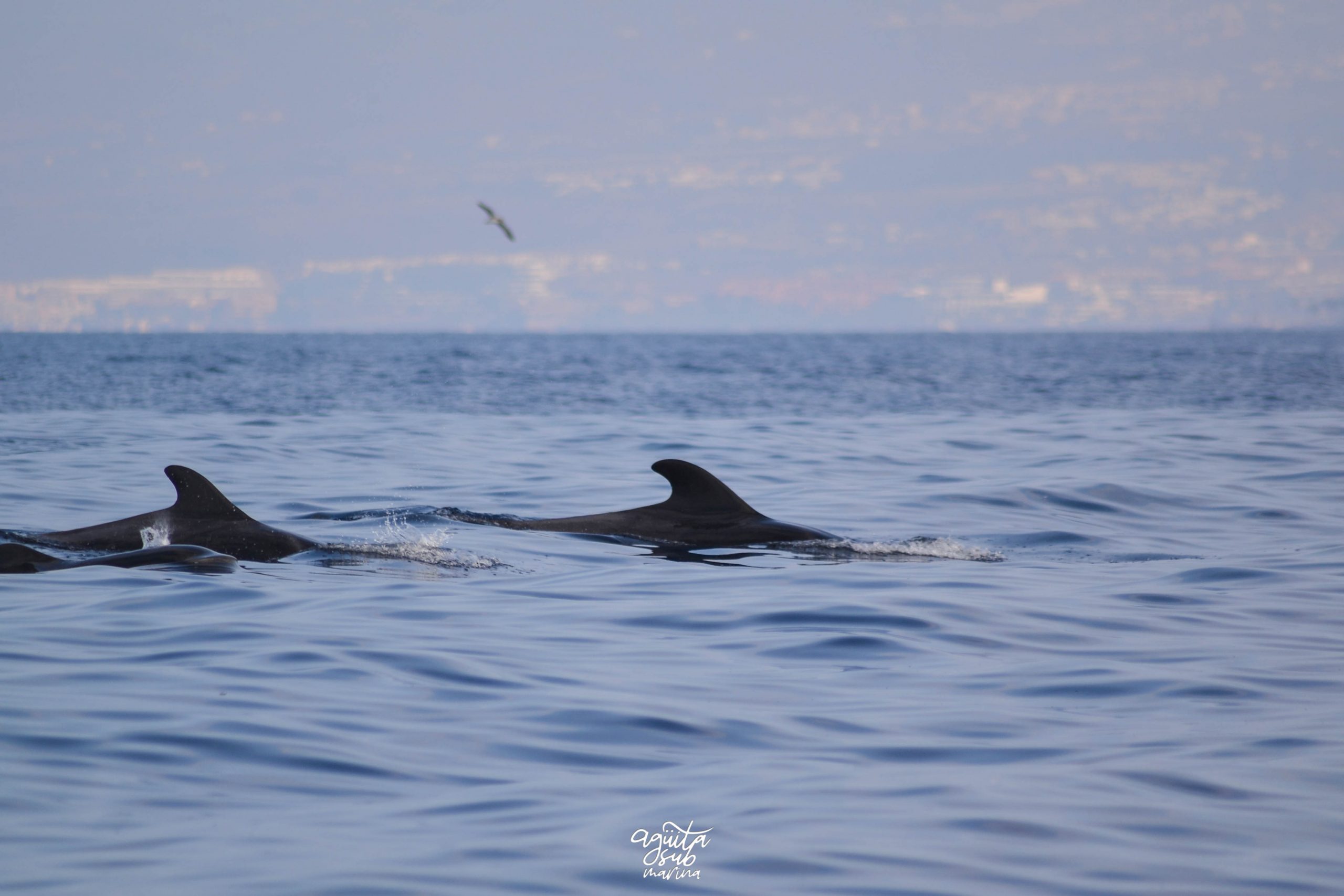
A real Canarian jewel
The short-finned pilot whale is undoubtedly the species of cetacean that we observe most frequently on our tours. They are found in the leeward side of practically all the islands, with an estimated population of up to 2000 individuals. Above all, the stable and resident population in the southwest of Tenerife stands out, one of the largest in the world, together with those residents in California, Japan and Hawaii. On the island of Tenerife, more than 400 fins of different individuals have been photo-identified, which means, worldwide, a unique and representative existence.
From the bottom of the ocean to the top of Mount Teide, Tenerife is the third highest volcanic island in the world, with a total elevation of 6 kilometres (more than 2 km underwater and almost 4 km above the sea surface). Its steep topography and great depth near the coast make this island perfect for pilot whales, which can live and dive down to 1200 meters to find their favorite prey. These large cetaceans prefer warm waters, so worldwide we can also find them distributed in tropical and subtropical areas. The long-finned pilot whale, Globicephala melas, is more likely to be found in temperate, subarctic and subantarctic waters.
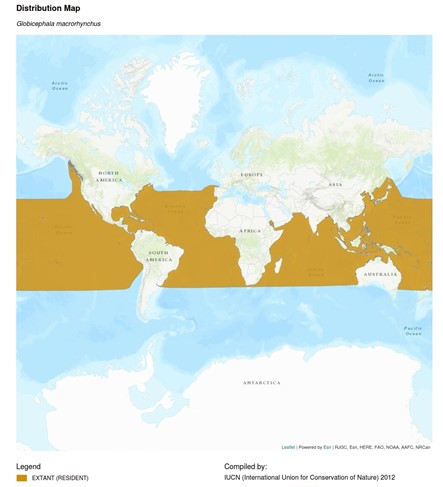
Their rounded head, which resembles the bottom of a cooking pot, stands out as the main characteristic feature, in addition to a large curved dorsal fin. They have a dark gray almost black coloration with a somewhat lighter pattern on the back. In general, males are larger than females, reaching up to 7 meters in length and weighing 4 tons. They are distinguished by their more developed melon and the dorsal fin, which is longer and larger than that of the females. The calves have a less bulging melon, a lighter coloration and a more pointed dorsal fin, similar to that of a common dolphin.
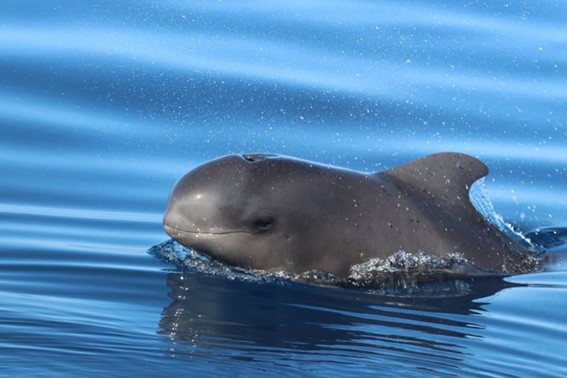
The fastest cetacean in the deep sea
Although its name in English is “pilot whale”, it is an odontocete cetacean belonging to the family Delphinidae, so, it is a dolphin as well as its close relatives, the killer whales. Among all cetaceans, the short-finned pilot whale holds the record for swimming speed at depth; they can reach 9 meters per second!
It doesn’t seem so when we find them swimming calmly on the surface, does it? If you have been aboard our boat “El Calderon“ with BIOSEAN Whale Watching & Marine Science you know that it is common to see them resting on the surface of the water, floating like buoys and replenishing their oxygen reserve for use on future deep dives. Instead of sleeping 8 hours as we humans do, they prefer to recover their energy with short naps throughout the day.
Usually, one or some members of the group dive in search of food, then we can observe the calves and juveniles at the surface, left in charge of some adult . These groups are the so-called “nursery groups”. These younger animals usually approach respectful boats invaded by a tremendous curiosity, adopting a very sociable behavior. We can see them showing one or both pectoral fins, raising their heads out of the water to look around (this is the behavior commonly called spy hopping) or slapping the surface with their tales to attract attention.
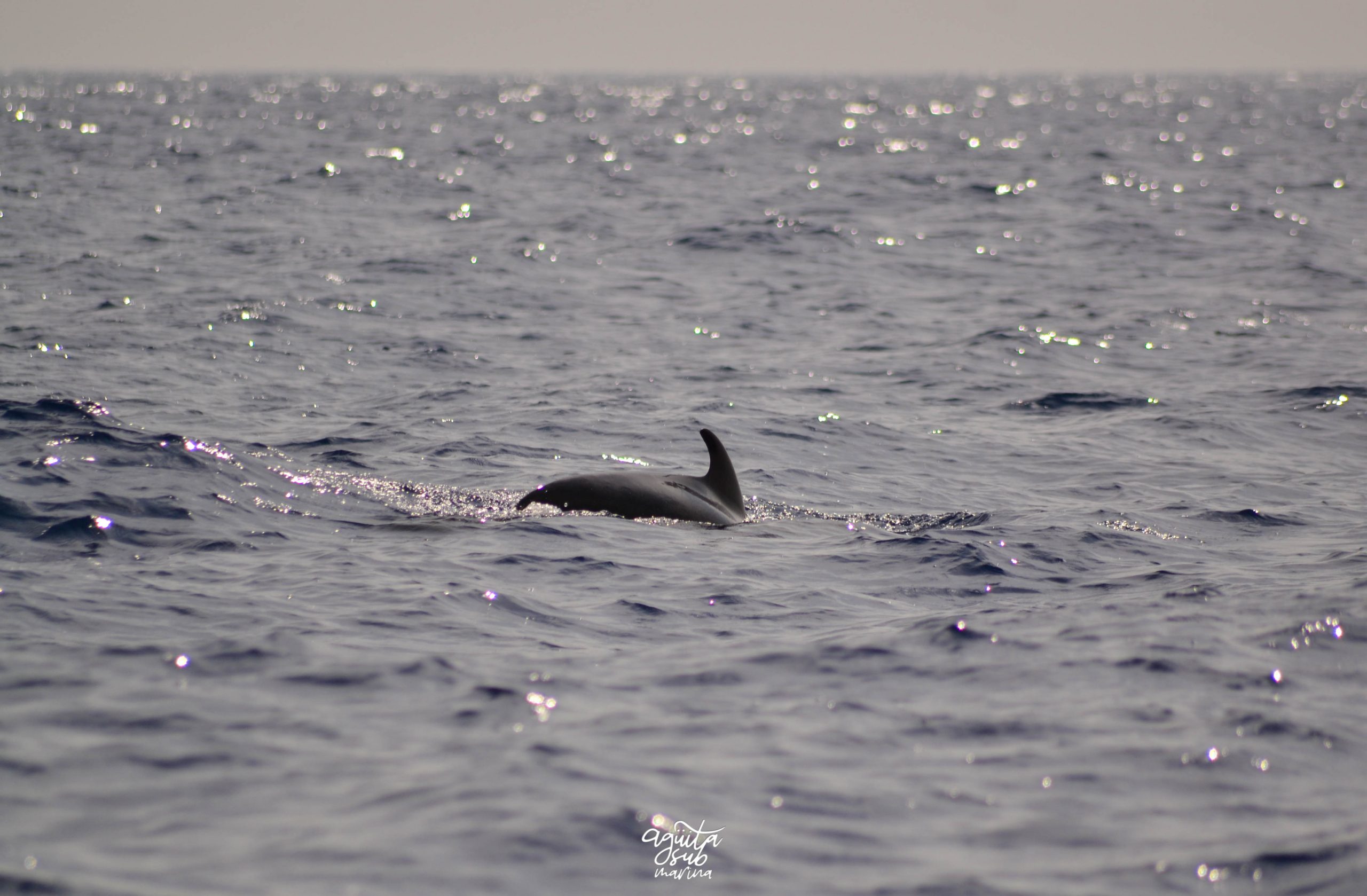
The great power of echolocation
As we previously discussed in the article “Bottlenose dolphins, protagonist in Tenerife whale watching”, pilot whales also rely on these clicks to feed, socialize and reproduce. They are intelligent and effective hunters, evolutionarily adapted to hunting at depth.
To feed, they dive to depths between 600 and 1200 meters, where sunlight disappears and darkness reigns. It is then that they use their melon to echolocate and find their prey. After an initial moment of orientation, they start their search at speeds of 25 to 30 km/h, and once they detect their prey, they travel at speeds equivalent to those of a cheetah on the savannah until they reach them. According to studies on the stomach contents of stranded pilot whales, giant squids are their favorite prey, although they supplement their diet with fish and octopus. After feeding, they use the rest of their energy to quickly return to the surface. All this underwater activity, which usually lasts about 25 minutes, requires a lot of energy, especially since they have to hold their breath! Once at the surface, exhausted, they search for the rest of the herd members, once again using the clicks coming from their large melon.

A sociable animal loyal to the herd
The cohesion between members of the same group is very remarkable: they remain together throughout their lives. This fidelity and ability to create strong emotional bonds is one of the most special and unique characteristics of pilot whales. Particularly between mothers and calves these bonds are especially intense: they care for them even beyond death, accompanying their young even if they lose their lives.
Pilot whales usually live in mixed groups of about 20-30 individuals (10-20 in Tenerife), composed mostly of adult females and their offspring, the ratio in the pods being four females to one male. The most adult females, after passing their reproductive age and menopause, become the most important individuals in these matriarchal societies. They care for and guide the herd, protect the youngest and share all the knowledge necessary for the survival of the group.
If solitary specimens are observed, they are generally adult males. In order to ensure greater genetic diversity and fertile offspring, mating takes place between members of different groups during the summer season. The offspring are born almost a year later and remain close to the mother until they are 4 or 5 years old, when they are weaned. Females mature sexually between 7 and 12 years, and males between 15 and 18 years. Males can live up to 45 years, while females can live up to 60 years.

Their greatest threat: ferries and boats
The short-finned pilot whale has been captured throughout history in the Pacific Northwest for consumption in Japan, with up to 2,300 individuals captured between 1985 and 1989, according to some studies. It currently enjoys a certain degree of protection in these territories, but poaching is still the order of the day and fishing pressure continues to threaten pilot whale populations residing in these waters.
However, in the Canary Islands, the anthropogenic threat that generates the greatest mortality in this species is maritime traffic and collisions with vessels. From 1991 to 2007, the Canary Islands stranding network recorded a total of 59 pilot whales injured or dead due to this cause. The overcrowding and activity of some illegal whale-watching companies causes these animals to be harassed. Many boats visit groups of pilot whales cornering the animals, cutting off their trajectory and preventing them from passing, interfering with their surface rest and causing them stress. To this must be added the constant traffic of “fast ferries” between the islands of Tenerife and La Gomera.
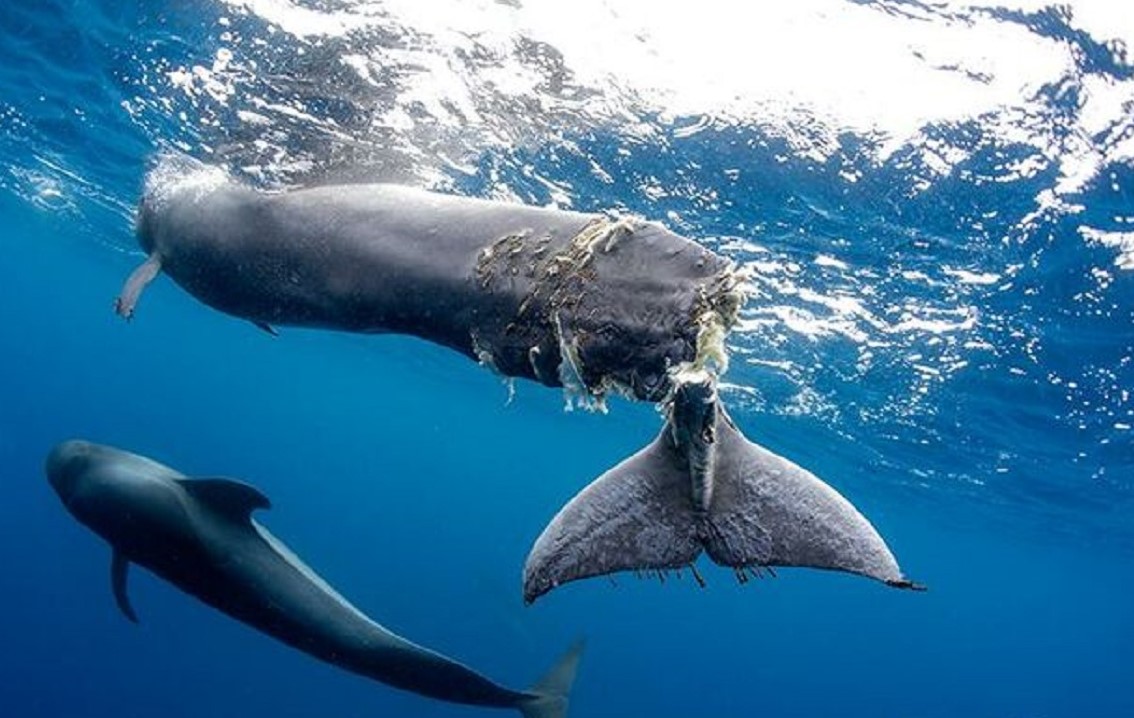
If you are looking for an unforgettable experience with cetaceans, without leaving aside sustainability and respect towards the sea and these incredible animals, in BIOSEAN Whale Watching & Marine Science we are waiting for you. On board of our boat “Calderón” you will be able to meet this and many other species that live in our waters.
Keep up to date with what is happening in the sea and in the incredible world of cetaceans by visiting our website (hyperlink: https://biosean.com/en/), follow us on Instagram (@biosean_) and check out the rest of our social networks: Facebook, YouTube and LinkedIn.
See you soon in the big blue!